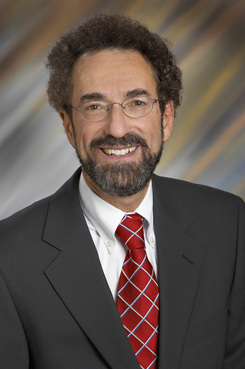After Causing Serious Injury, Death in Collision, Cop Outruns the Law
Imagine this situation. A tragic car collision injures Michael Sauers and kills his wife. The injuries and death result from the “criminally reckless driving of police officer Stephen Homanko,” but the police officer walks away from any civil liability for money damages to the family he killed and injured. How could such a thing happen?
December 06, 2018 at 12:46 PM
5 minute read
 Cliff Rieders
Cliff Rieders
Imagine this situation. A tragic car collision injures Michael Sauers and kills his wife. The injuries and death result from the “criminally reckless driving of police officer Stephen Homanko,” but the police officer walks away from any civil liability for money damages to the family he killed and injured. How could such a thing happen?
On May 12, 2014, Sauers and his wife were driving on the road, minding their own business. Officer Homanko was on patrol, when he saw a yellow Dodge Neon commit a summary offense. The police officer chased down the driver at speeds of 100 miles per hour, even though the police officer called ahead to the jurisdiction in which the speeder was traveling so that the municipality into which the speeder was headed could stop the driver. During his pursuit, the police officer lost control of the police car while going around a curve. He crashed into the Sauers' car, causing injuries and death.
It seems like a no-brainer: The three-panel U.S. Court of Appeals for the Third Circuit ruled in a 2-1 decision that the complaint against the police officer stated a plausible case for a state-created danger. The government, ruled the court, has an obligation under the 14th Amendment to due process clause “to protect individuals against dangers that the government itself creates.” The action of the state actor must “shock the contemporary conscience.” After going through the “shock-the-conscience” test, the court found that the trial court, the U.S. district court, rightly interpreted the complaint to allege that the police officer had at least some time to deliberate before deciding whether and how to pursue the traffic offender. In other words, the police officer demonstrated a conscious disregard of a great risk of serious harm.
Even though the police officer acted with criminal recklessness, causing the death of an innocent motorist, the court was then required to determine whether the police officer was entitled to qualified immunity. In order to prevail on a claim against the police officer, it must be shown that the law is “sufficiently clear that every reasonable official would have understood that what he is doing violates that right.” In other words, did the police officer know in 2014 that he was doing the wrong thing? The court ruled that “An officer on patrol in May 2014 could have reasonably understood, based on prevailing law, that he could pursue a potential traffic offender, even recklessly, without being subjected to constitutional liability.” This remarkable conclusion, which itself shocks the conscience, was reached by Third Circuit Judge Kent Jordan, joined by Judge Thomas Ambro. After reviewing the case law in the Eighth, Ninth and Tenth circuits, the two-judge majority concluded that it could not conclude that the case law by May 2014 had clearly established that an officer's decision to engage in a high-speed pursuit of a suspected traffic offender could, in the absence of an intent to harm, give rise to constitutional liability.
The year 2014 does not sound like the stone age, but apparently that was too long ago for this court. Of slim comfort to the injured and deceased is that the two-judge majority ruled that police officers “now have fair warning that their conduct when engaged in a high-speed pursuit will be subject to the full body of our state-created danger case law.”
Judge Thomas Vanaskie dissented from the logic that Officer Homanko was entitled to qualified immunity. Vanaskie assessed the case law and reached a different conclusion on the qualified immunity test. “In my view, qualified immunity should not be granted here simply because there is little case law imposing liability on a police officer who drives his cruiser at speeds in excess of 100 miles per hour, in a nonemergency situation.” Vanaskie read the other circuit court decisions as representing differing factual patterns. Cases in other courts where police officers were entitled to qualified immunity frequently involved emergency situations. In the case before the Third Circuit, Sauers v. Nesquehoning, the Judges all agreed that the police officer was not involved in an emergency situation. “The unconstitutional nature of Homanko's actions, placing a substantial risk to those traveling a two-lane, undivided highway in recklessly criminal pursuit of an unsuspecting motorist for a minor traffic infraction, was clearly established when he slammed into the Sauers' vehicle, mortally injuring Mrs. Sauers and severely injuring her husband.”
This is a case that needs to be reviewed by the court en banc. The entire courts of appeals or the U.S. Supreme Court needs to look at this case to see that Justice is done.
Cliff Rieders, of Rieders, Travis, Humphrey, Waters, & Dorhmann, is a board-certified trial advocate in Williamsport, past president of the Pennsylvania Trial Lawyers Association and a past member of the Pennsylvania Patient Safety Authority. Contact him at [email protected].
This content has been archived. It is available through our partners, LexisNexis® and Bloomberg Law.
To view this content, please continue to their sites.
Not a Lexis Subscriber?
Subscribe Now
Not a Bloomberg Law Subscriber?
Subscribe Now
NOT FOR REPRINT
© 2025 ALM Global, LLC, All Rights Reserved. Request academic re-use from www.copyright.com. All other uses, submit a request to [email protected]. For more information visit Asset & Logo Licensing.
You Might Like
View All

Pa. High Court to Decide Whether Flight in a High Crime Area Can Result in an Investigative Stop
6 minute read
Lackawanna County Lawyer Fails to Shake Legal Mal Claims Over Sex With Client
3 minute readTrending Stories
- 1States Accuse Trump of Thwarting Court's Funding Restoration Order
- 2Microsoft Becomes Latest Tech Company to Face Claims of Stealing Marketing Commissions From Influencers
- 3Coral Gables Attorney Busted for Stalking Lawyer
- 4Trump's DOJ Delays Releasing Jan. 6 FBI Agents List Under Consent Order
- 5Securities Report Says That 2024 Settlements Passed a Total of $5.2B
Who Got The Work
J. Brugh Lower of Gibbons has entered an appearance for industrial equipment supplier Devco Corporation in a pending trademark infringement lawsuit. The suit, accusing the defendant of selling knock-off Graco products, was filed Dec. 18 in New Jersey District Court by Rivkin Radler on behalf of Graco Inc. and Graco Minnesota. The case, assigned to U.S. District Judge Zahid N. Quraishi, is 3:24-cv-11294, Graco Inc. et al v. Devco Corporation.
Who Got The Work
Rebecca Maller-Stein and Kent A. Yalowitz of Arnold & Porter Kaye Scholer have entered their appearances for Hanaco Venture Capital and its executives, Lior Prosor and David Frankel, in a pending securities lawsuit. The action, filed on Dec. 24 in New York Southern District Court by Zell, Aron & Co. on behalf of Goldeneye Advisors, accuses the defendants of negligently and fraudulently managing the plaintiff's $1 million investment. The case, assigned to U.S. District Judge Vernon S. Broderick, is 1:24-cv-09918, Goldeneye Advisors, LLC v. Hanaco Venture Capital, Ltd. et al.
Who Got The Work
Attorneys from A&O Shearman has stepped in as defense counsel for Toronto-Dominion Bank and other defendants in a pending securities class action. The suit, filed Dec. 11 in New York Southern District Court by Bleichmar Fonti & Auld, accuses the defendants of concealing the bank's 'pervasive' deficiencies in regards to its compliance with the Bank Secrecy Act and the quality of its anti-money laundering controls. The case, assigned to U.S. District Judge Arun Subramanian, is 1:24-cv-09445, Gonzalez v. The Toronto-Dominion Bank et al.
Who Got The Work
Crown Castle International, a Pennsylvania company providing shared communications infrastructure, has turned to Luke D. Wolf of Gordon Rees Scully Mansukhani to fend off a pending breach-of-contract lawsuit. The court action, filed Nov. 25 in Michigan Eastern District Court by Hooper Hathaway PC on behalf of The Town Residences LLC, accuses Crown Castle of failing to transfer approximately $30,000 in utility payments from T-Mobile in breach of a roof-top lease and assignment agreement. The case, assigned to U.S. District Judge Susan K. Declercq, is 2:24-cv-13131, The Town Residences LLC v. T-Mobile US, Inc. et al.
Who Got The Work
Wilfred P. Coronato and Daniel M. Schwartz of McCarter & English have stepped in as defense counsel to Electrolux Home Products Inc. in a pending product liability lawsuit. The court action, filed Nov. 26 in New York Eastern District Court by Poulos Lopiccolo PC and Nagel Rice LLP on behalf of David Stern, alleges that the defendant's refrigerators’ drawers and shelving repeatedly break and fall apart within months after purchase. The case, assigned to U.S. District Judge Joan M. Azrack, is 2:24-cv-08204, Stern v. Electrolux Home Products, Inc.
Featured Firms
Law Offices of Gary Martin Hays & Associates, P.C.
(470) 294-1674
Law Offices of Mark E. Salomone
(857) 444-6468
Smith & Hassler
(713) 739-1250






